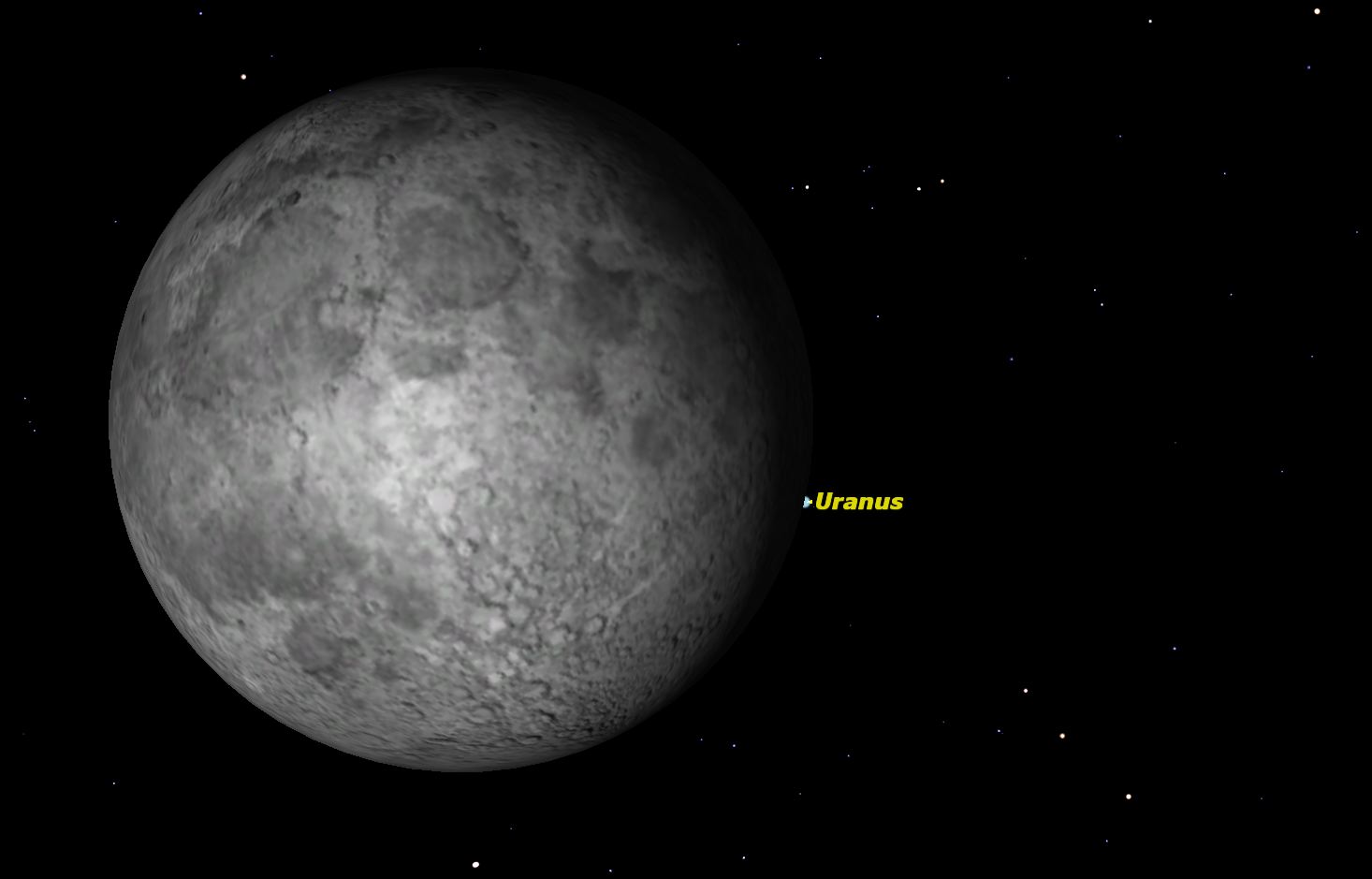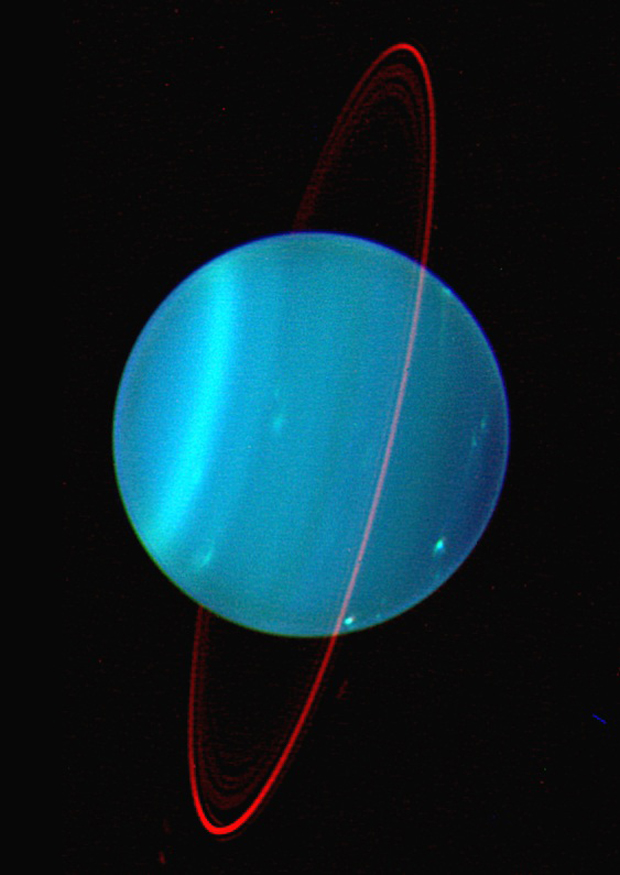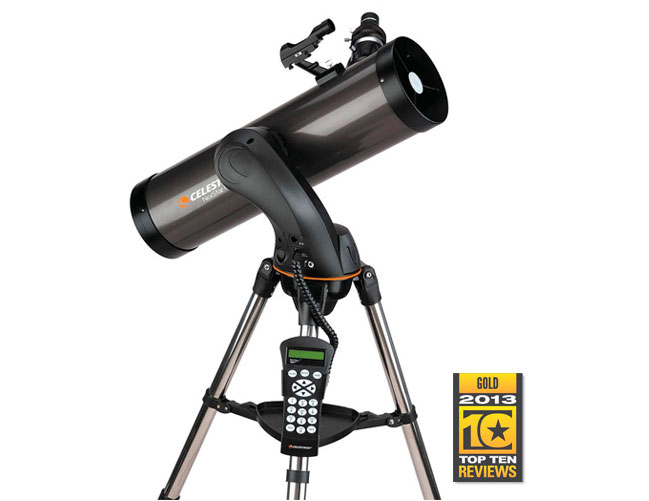Uranus Plays Peek-a-Boo with the Moon Tonight

As the moon moves in its orbit around the Earth, it inevitably passes in front of many stars and planet and Uranus will find itself in the moon's crosshairs tonight (Sept. 10).
When the moon passes in front of a star, known as a "lunar occultation," the star usually winks out instantaneously, since it is so much farther away. But there are exceptions when the star is a double star or, more rarely, when the star passes behind a mountain on the edge of the moon.
When the moon passes in front of a planet, however, the disappearance is more gradual. Even for a planet as distant as Uranus, the disappearance takes about 10 seconds. And that is exactly what will happen tonight for skywatchers located in the northeastern North America, weather permitting. [How to Observe the Moon (Infographic)]
The moon will block Uranus just around moonrise, so the earlier the moon rises in your location, the better your chances of seeing it. In most locations, Uranus will have passed behind the moon while the moon is still below the horizon, so only the reappearance of Uranus will be visible.
For example, in Halifax, Nova Scotia, the moon rises at 9:24 p.m. ADT. Uranus passes behind the moon at 10:00, when the moon is only 5 degrees above the horizon, next to impossible to observe. Uranus reappears nearly an hour later at 10:40. In New York City, the moon rises at 8:10 p.m. EDT but Uranus appears only 21 minutes later, at 8:31 p.m., when the moon is only 3 degrees above the horizon, a tough observation unless you have a really low eastern horizon.


You can use a planetarium software program to give you the exact time when Uranus will be uncovered. This will also let you determine ahead of time exactly where on the moon's limb the planet will appear from your particular location. Since the whole event takes only 10 seconds, it's important to be looking at the right spot.
Even if you live too far west to observe the actual occultation, this is an excellent opportunity to use Uranus' proximity to the moon to locate and observe Uranus. Again, your planetarium program will show you exactly where Uranus is located relative to the moon, which will vary from one location to another.
Get the Space.com Newsletter
Breaking space news, the latest updates on rocket launches, skywatching events and more!
Uranus is just at the lower limit of naked-eye visibility, but can be easily seen in binoculars. Even the largest amateur telescopes will show only a tiny featureless bluish disk.
Editor's note: If you capture a photo of the moon and Uranus tonight, or any other night sky view, and would like to share it with Space.com, you can send images and comments in to managing editor Tariq Malik at: spacephotos@space.com.
This article was provided to Space.com.com by Simulation Curriculum, the leader in space science curriculum solutions and the makers of Starry Night and SkySafari software. Follow Starry Night on Twitter @StarryNightEdu. Follow us @Spacedotcom, Facebook and Google+. Original article on Space.com.
Join our Space Forums to keep talking space on the latest missions, night sky and more! And if you have a news tip, correction or comment, let us know at: community@space.com.

Geoff Gaherty was Space.com's Night Sky columnist and in partnership with Starry Night software and a dedicated amateur astronomer who sought to share the wonders of the night sky with the world. Based in Canada, Geoff studied mathematics and physics at McGill University and earned a Ph.D. in anthropology from the University of Toronto, all while pursuing a passion for the night sky and serving as an astronomy communicator. He credited a partial solar eclipse observed in 1946 (at age 5) and his 1957 sighting of the Comet Arend-Roland as a teenager for sparking his interest in amateur astronomy. In 2008, Geoff won the Chant Medal from the Royal Astronomical Society of Canada, an award given to a Canadian amateur astronomer in recognition of their lifetime achievements. Sadly, Geoff passed away July 7, 2016 due to complications from a kidney transplant, but his legacy continues at Starry Night.









